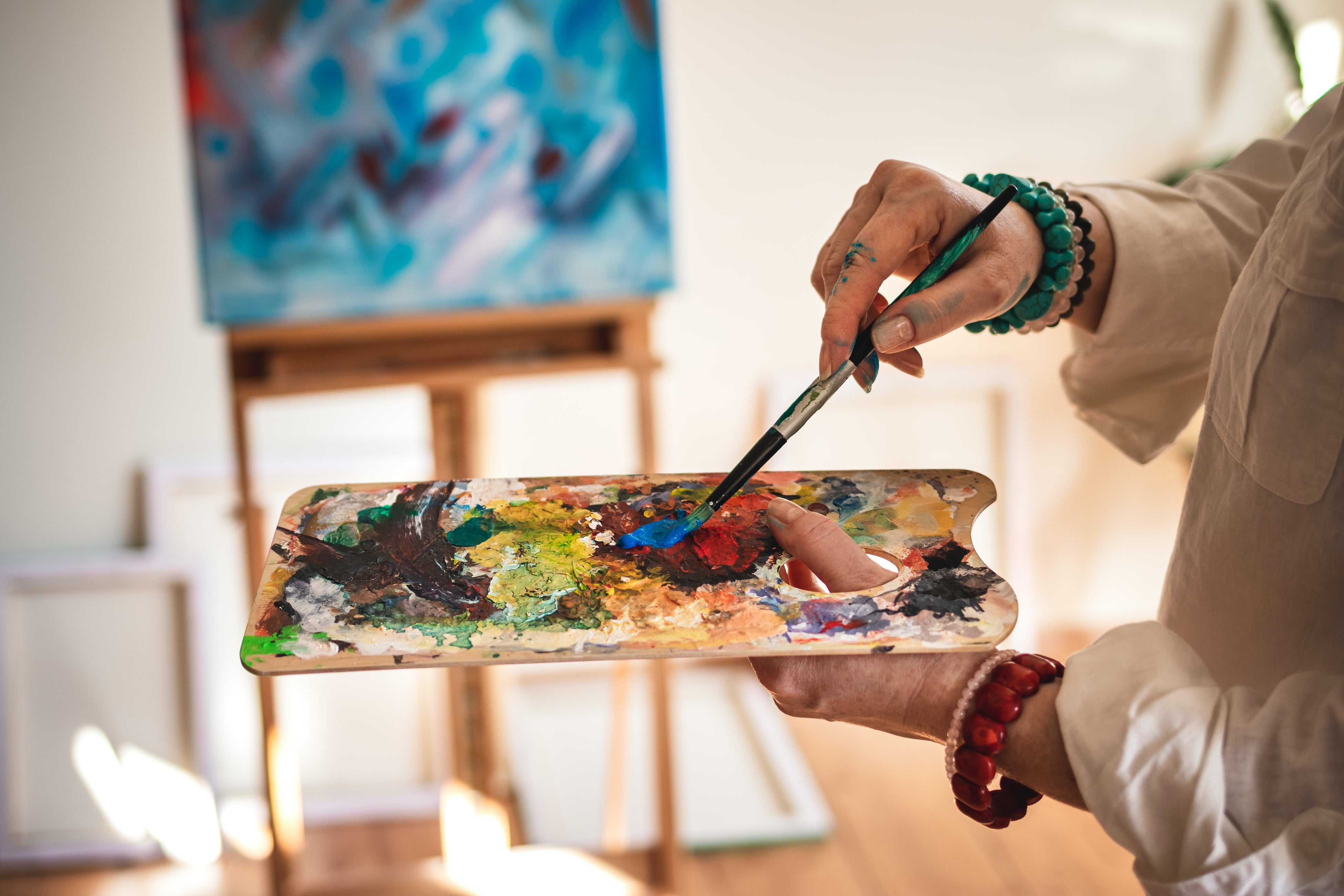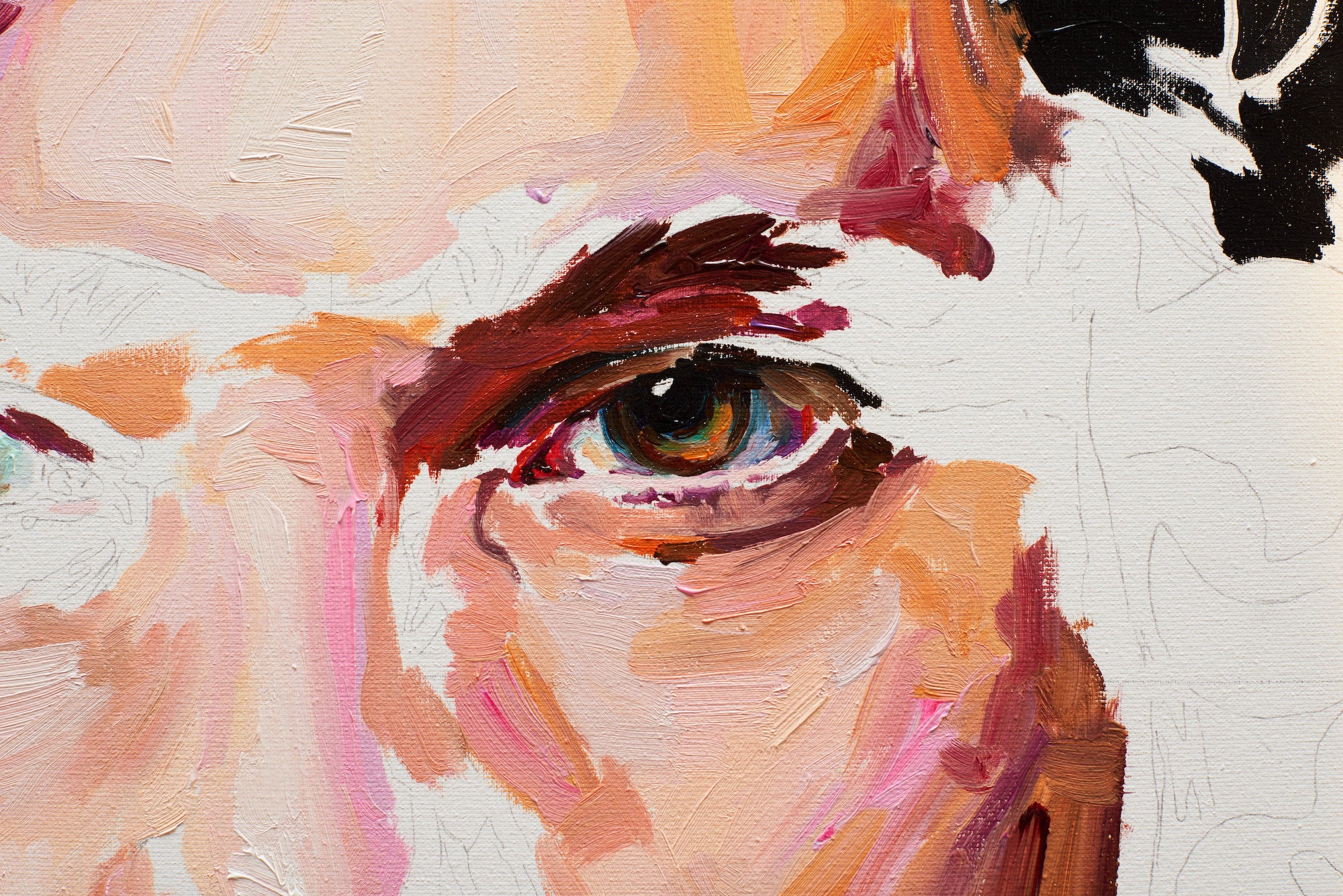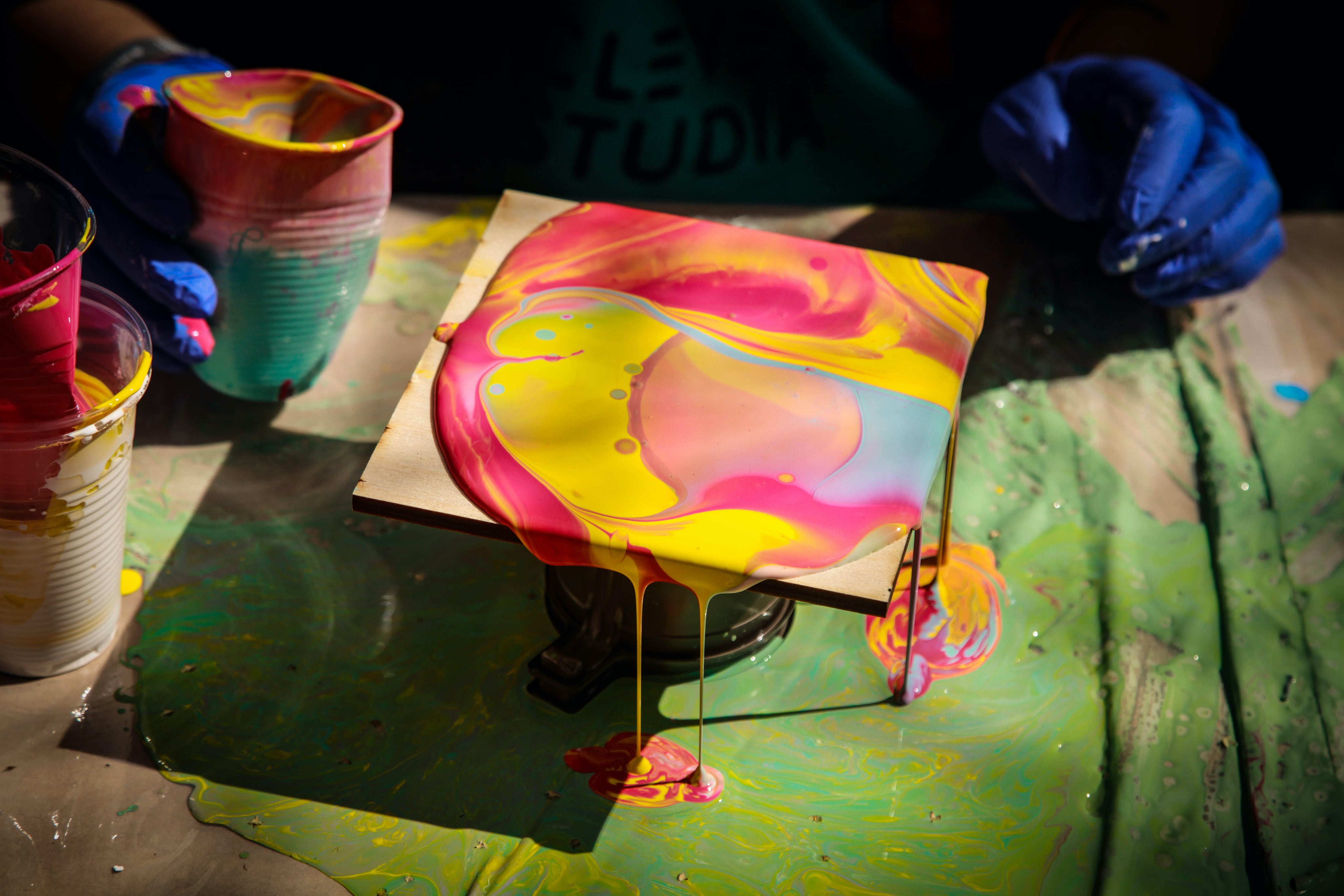Acrylic Cheat Sheet: All Things Acrylic for Beginner & Intermediate Level Creatives

Acrylic paint is a popular medium for artists of all skill levels since it allows for a wide variety of artistic expression. It's a versatile and simple-to-apply paint that dries rapidly and can be applied to a number of surfaces.
You can enhance your skills and become a more effective and confident artist working with acrylic paint by following these guidelines and practicing on a regular basis.
- Begin with a simple subject: As a beginner, it's best to begin with something simple, such as a still life or landscape. This allows you to concentrate on the fundamentals of acrylic painting, such as color mixing, brushstrokes, and blending, without becoming overwhelmed by a complex topic.
- Practice fundamental techniques: Before getting into more sophisticated projects, spend some time practicing basic methods like mixing, layering, and generating color gradations. This will allow you to get a feel for the paint and how it reacts on various surfaces. Learn the fundamentals of color mixing, brushwork, and composition to lay a solid foundation for your artwork.
- Use a limited palette of colors: When you initially begin using acrylics, try utilizing a limited palette of colors to keep things easy. This will make mixing colors and achieving the required tones easier. This will also help you gain a feel for blending colors and generating various tints and tones. Using a limited palette of colors can aid in the creation of harmony and coherence in your paintings. Colors such as yellow, red, blue, white, and black can be found in a basic palette.
- Try using a variety of brush sizes & types: Acrylic paints can be applied with a number of brush sizes and types, ranging from thick to thin. Because different brush sizes and shapes can produce different effects, it's a good idea to experiment with different brushes to determine what works best for the effect you're after. You may create different effects and textures in your paintings by playing with different brush sizes and kinds.
- Try exploring with different brush strokes and marks: Acrylic paint can be handled in several ways by employing various brush strokes and marks. Experiment with various strokes and markings to see what effects you can achieve and how you can utilize them to create different textures and effects in your artwork.
- Experiment with various surfaces and supports: Acrylics may be harsh on unprepared surfaces, therefore it's critical to select a surface that's specifically built for usage with acrylics. The surface on which you paint has a significant impact on the final outcome of your artwork. Experiment with different surfaces, such as canvas, wood, or even paper, to observe how the paint behaves and what effects you can get. Using a primed canvas or heavy-duty paper can have a significant impact on your art.
- Thin the acrylics with a medium: Acrylics can be thick and difficult to work with, thus a medium, such as water or a flow improver, can be used to dilute the paint and make it easier to apply. Because only acrylic paint has a quick drying period, utilizing a medium with your acrylics provides you extra time to work with your paint.
- Practice layering: Because acrylics dry rapidly, it's best to work in thin layers, allowing each layer to dry before adding the next. Practice adding numerous layers of paint to your paintings to provide depth and texture. This will help to prevent muck and will give your painting a more glossy, professional appearance.
- Make use of reference images: Examining reference photos to practice duplicating specific effects or approaches, as well as studying other artists' work to discover how they approach their art. Studying the work of other artists might help you improve your talents and acquire new techniques. To hone your creative abilities, try working with living muses. Painting from life or from reference images can help you enhance your realism and precision.

The image above was used as a reference photo for Holly Ellsworth-Rose's 'Songhai' painting.

As you can see, reference photos are not used to copy, but rather to help inspire the artist to put their own spin on the original image.
- Practice mixing colors: Learning how to combine colors to achieve the desired tints and tones is an important component of working with acrylic paint. Practice mixing colors to obtain a sense of how different pigments interact and how to achieve the desired tones. Sticking to a simple color pallet, such as yellow, blue, red, and white, might assist you in mastering color mixing and achieving the desired colors.
- Participate in a class or workshop: Taking a class or workshop with an experienced instructor can help you develop your skills while also providing vital feedback on your work. Don't be afraid to approach your teacher for clarification or guidance, as having a second, more mature perspective can be really beneficial.
- Practice on a regular basis: "Practice makes perfect" - Bruce Lee. The more you paint with acrylics, the more at ease you'll become with the medium and the better you'll get at achieving the desired results. Make time every day to work on your art.
- Don't be scared to make mistakes: acrylic painting is all about experimenting and learning. Make mistakes because they can lead to new and intriguing artistic discoveries.
Pro Tips:
- Clean your brushes immediately. If acrylic paint dries on brushes, it can destroy them. Always use water and mild soap to clean your brushes immediately after use.
- For texture, use a palette knife. You can use a palette knife to add texture and complexity to your paintings.
- To keep your work from smudging, use a fixative. A fixative can assist prevent smearing or rubbing off of acrylic paintings.
- Invest in high-quality brushes, canvases, and acrylic paints. While it is acceptable to begin with student-grade materials, as you improve, you will discover that professional-grade resources provide better pigment load and longevity.
- Consider varnishing your painting once it has dried. This shields it from dust and UV rays. Remember to wait until your painting is entirely dry before varnishing (this could take a few days to a week, depending on the thickness of the paint).
Acrylic painting is a dynamic journey with limitless possibilities and a rich tapestry of techniques to discover. As previously stated, expertise in acrylics is about the harmony of multiple factors, ranging from the correct brushes and media to a profound understanding of color theory and the surfaces you choose to work on. Like the 'Songhai' painting, which is inspired rather than copied, each artist's journey with acrylics is about building their own road, learning from sources but constantly adding their own unique touch.
Remember that every stroke you make on the canvas is a step closer to perfecting your technique. Above all, make your acrylic journey one of joy, inquiry, and continuous discovery. Accept every lesson, every error, and every accomplishment as you immerse yourself in this vivid environment. Here's to your colorful road ahead, and may your palette always be full with ideas!


